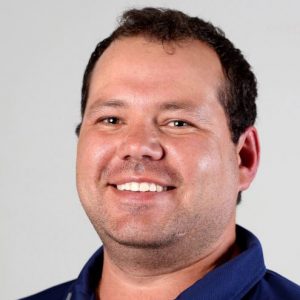Colin Sieders was 15-years-old when he was involved in the first of two major car accidents. A friend’s mum was driving him and a teammate to soccer when she drove over black ice, causing the car to veer off the road and into a pole.
With the left side of his pelvis torn out of his body, Colin lost so much blood that he holds the world record for most blood lost in a car accident. Sadly, his friend’s mother was killed on impact.
It took two hours for CareFlight paramedics to stabilise Colin before they could fly him to Nepean Hospital, where he underwent 30 major operations. On top of his damaged pelvis, he also had a compact fracture in his left femur which partially paralysed his leg. He was in hospital for 51 weeks including 88 days in intensive care.
After nearly a year, Colin returned home in a wheelchair, but having been in hospital for so long, it did not take him long to contract an infection causing gangrene, resulting in the removal of muscle in the right side of his leg, lower back and abdominal muscles. It took five years for him to learn to walk with crutches, and eventually, with 30 per cent use of his left leg, to walk unaided.
At 17-years-old, Colin became the first V8 supercar driver in the world with a disability when he joined his family’s V8 Supercars team, Sieders Racing Team. He enjoyed a successful career as a V8 driver until a second car accident in 2011 put him back in a wheelchair.
Colin broke bones in his knee but due to the way he had been walking over the last eight years, his hip compressed a nerve, meaning he is unable to stand for more than 10 minutes and can only walk with the assistance of crutches.
After putting on weight, he hired personal trainer and former slalom paddler Sam Norton. After meeting Para-canoe head coach Andrea King, Sam made it his mission to get Colin to the Paralympic Games.
The Hawkesbury Heights local made his international debut at the 2013 ICF Para-canoe Sprint World Championships in Duisburg where he placed 7th in the 200m sprint.
Ahead of his Paralympic debut at the 2016 Games in Rio, Colin was training on the water five to seven times per week, in addition to three to four sessions in the gym. Colin did well to place 4th in his heat and the semi-final, and progress to the final.
He also finds time to run the family business, raise three daughters, and do ambassadorial work for CareFlight, which he attributes to saving his life.
Show less Para-canoe
Para-canoe



 Join AUS Squad
Join AUS Squad